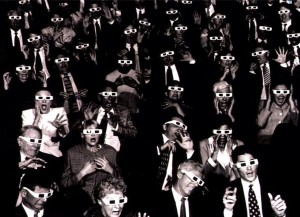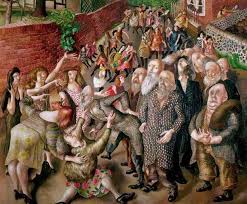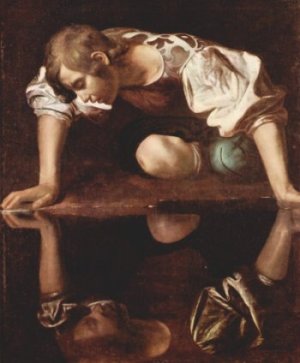 What makes an audience? What motivates people to buy a ticket? What influences their decisions? Answer this with any degree of certainty and a job in the Audience Development Department of a major arts organization can be yours.
What makes an audience? What motivates people to buy a ticket? What influences their decisions? Answer this with any degree of certainty and a job in the Audience Development Department of a major arts organization can be yours.
Ask a performer and s/he will assure you that it is the quality of the product that motivates the purchase of a ticket. Better shows deserve and win bigger audiences, goes the logic. Ask a more dispassionate marketing professional and s/he will understand the larger context, recognizing that there are much more mundane reasons for people’s choices. People buy for as many reasons as there are seats in the house.
Everyday expediency often wins out over the pursuit of the pinnacle arts experience. Is the theater easy to get to? Is there parking? Is there adequate public transit? Can I get a bite to eat before or after the show? Is the show at a convenient time? Are the tickets within my price range? Can I get someone to go with me? Do I know anyone in the cast?
Generating an audience relies on a complex mix of factors, only one of which is the quality of the product. This simple observation eludes many in the profession, who obstinately and proudly believe that it is the art, and the art alone, and even singularly their own particular art, that motivates attendance.
Even insiders misunderstand this. In her August 8th 2013 column, the theatre critic Lyn Gardner in the Guardian chides that “..nobody ever bought a ticket to see a show because it is supporting the professional development and projected aims and outcomes of those who made it.”
Apparently Ms. Gardner has no friends or family who have ever been involved with anything artistic. If she does know such people she has never been supportive of their efforts because she attends only quality shows based on their artistic content alone, and imagines that everyone else is as coldly discriminating as she is. The clinically meritocratic world that she inhabits, free from personal connection and with no motivation other than the pursuit of artistic excellence, is the territory of the professional arts writer but of very few others. Her fallacy is to universalize her own narrow experience and to think that the general public shares her motivations and opportunities.
Many professionals imagine the presence of only ‘authentic’ audience members, and speak denigratingly of the ‘ill-informed’ or the ‘bridge and tunnel crowd.’ Some even subconsciously resent that bad weather might generate a large walk-in audience or that a wittily targeted advertising campaign (Electrolux’s sponsorship of Welsh National Opera’s Elektra in 1978, for example) might encourage people into the theatre, people whose applause is somehow therefore less genuine. The wise artist knows that this is not true, and is able to separate out his/her worth from the size and makeup of the audience. The fool labors for recognition only from a specific and narrow sampling of those who venture out for their entertainment.
People attend cultural events for relational, social, business and other reasons. They may want to please a friend or colleague, to host a family member, to support someone in the cast, because it’s a tradition, because the preferred show was sold out or because the tickets were free! Audience development is not merely a question of finding the right stage-product to sell, because the product is not necessarily what the audience has bought; some people have bought a night away from a new baby, some have bought an evening with friends, some might be trying something different, anything that isn’t another night in front of the screen.
A random sampling of people who don’t attend arts events would provide a list of many of the barriers that keep them away. Where other entertainment options are self-explanatory the arts tend towards obfuscation bordering on preciousness. Architecturally (loggia, anyone?) and behaviorally, (do I clap now?) concerts and their venues can be as indecipherable as computer code. Additionally, buying a ticket nowadays often involves creating an online membership with an account that has its own password, surely an additional layer of Fort Knoxery that deters all but the most intrepid arts stalwarts.
 It is important to acknowledge that there are many factors that influence audience attraction beyond the control of any arts organization. This means that a company’s resources are best spent on the things that it can most easily and most effectively influence, and not on the impossibly big picture. One aspect that is within the presenter’s control is the social magnetism of the presentation. If you work on your organization’s social pull, its friendly appeal and its accessibility, the audience will feel welcome and welcomed, personally involved with the project and not just accessories to the performers’ good time. Think about them, refer to them and treat them patronizingly (as The Great Unwashed, for example) and any potential audience will remain alienated and disenfranchised. Engage with them as acquaintances and you will have them hooked. Here are some tips –
It is important to acknowledge that there are many factors that influence audience attraction beyond the control of any arts organization. This means that a company’s resources are best spent on the things that it can most easily and most effectively influence, and not on the impossibly big picture. One aspect that is within the presenter’s control is the social magnetism of the presentation. If you work on your organization’s social pull, its friendly appeal and its accessibility, the audience will feel welcome and welcomed, personally involved with the project and not just accessories to the performers’ good time. Think about them, refer to them and treat them patronizingly (as The Great Unwashed, for example) and any potential audience will remain alienated and disenfranchised. Engage with them as acquaintances and you will have them hooked. Here are some tips –
- Is the venue easy to get to? Provide directions to and from nearby public transit, instructions about bicycle parking, as well as a couple of vehicle parking options.
- Are tickets easy to buy? Eliminate unnecessary memberships and passwords.
- Does the audience feel welcome? Talk about your audience and to your audience with respect and personal curiosity. Don’t assume that their lives reflect yours, and don’t discount or denigrate their motives. Their reasons for coming to a show are as valid as yours, and remember that if they stayed home you would have to stay home too.


